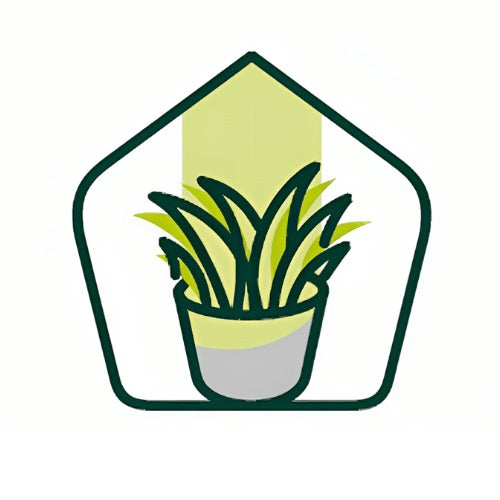HPAB
Arabian jasmine in 4 inch nursery bag
Arabian jasmine in 4 inch nursery bag
Couldn't load pickup availability
Arabian jasmine is famous for its fragrant flowers and its use in jasmine tea and leis. It is a fast-growing evergreen climbing shrub. Glossy, dark green oval leaves create a beautiful contrast to the highly fragrant, white flowers that fade to pink as they age. These beautiful-smelling blooms appear all summer long and may continue to bloom year-round in warm climates.
Arabian jasmine can be trained as a flowering vine with supports or maintained as a sprawling shrub. It also does very well in containers and makes an eye-catching plant for patios and porches.
| Botanical Name | Jasminum sambac |
| Common Name | Arabian jasmine |
| Plant Type | Evergreen |
| Mature Size | 6-10 ft. tall, 6-10 ft. wide |
| Sun Exposure | Full, partial |
| Soil Type | Loamy, moist but well-drained |
| Soil pH | Acidic, neutral |
| Bloom Time | Summer |
| Flower Color | Pink, white |
| Hardiness Zones | 9-11, USA |
| Native Area | Asia |
Arabian Jasmine Care
Maintaining Arabian jasmine is quite easy. Like other tropical plants, the Arabian jasmine requires warm temperatures, lots of sunshine, and high humidity levels. Pruning is minimal and usually only needed to maintain the desired shape.
Keeping this plant in containers is an ideal option for areas with winters that are colder than the jasmine can handle, as the pot can be brought indoors. Arabian jasmine is not often bothered by pests or diseases.
Light
Full to partial sun is needed for healthy Arabian jasmine plants. At least 6 to 8 hours of sunlight per day is ideal. If kept indoors during the winter, be sure to place this plant in a very sunny window.
Soil
Loose, loamy, humusy soil is preferred by this flowering shrub. It likes an evenly moist, well-draining soil medium. Adding compost will help loosen, enrich, and moisten the soil.
Water
Arabian jasmine requires plenty of water, especially during the summer season. Water this plant regularly to keep the soil moist, though not wet. Avoid soggy soil as this will lead to rot.1 When the first few inches of soil feels dry to the touch, water thoroughly. This may be once a week or more, depending on your location. It is best to reduce this plant’s water during the winter.
Temperature and Humidity
Arabian jasmine thrives in warm, tropical climates from USDA hardiness zones 9 to 11. They are very susceptible to frost and cannot handle cold temperatures.1 Because they are tropical plants, Arabian jasmine needs moderate to high humidity levels.
Fertilizer
Giving Arabian jasmine fertilizer throughout its growing season will help support its abundant blooming. It is best to use a high-quality, well-balanced fertilizer. Begin fertilizing after pruning in late winter or early spring.
Arabian Jasmine Varieties
- Jasminum sambac 'Grand Duke of Tuscany': This slower-growing variety deviates from the usual flower structure by producing double and semi-double blooms. This allows the flowers to take on a rose-like appearance.
- Jasminum sambac 'Belle of India': This variety sports beautiful flowers with elongated petals. It can produce both single and double blooms.
- Jasminum sambac 'Maid of Orleans': This variety has rounded petals on a single bloom, giving this flower a soft, star-like appearance.
Pruning Arabian Jasmine
Arabian jasmine does not require extensive pruning, but proper trimming will ensure a beautiful, healthy plant. For areas where the Arabian jasmine blooms year-round, simply prune the plant to maintain its desired shape.
In climates where this plant ceases blooming during the winter season, trim away all dead branches and blooms above their nodes in the beginning of winter. This will ensure healthy new growth for the coming growing season.
Propagating Arabian Jasmine
Propagating Arabian jasmine is best done by cuttings. Here’s how:
- Using clean garden snips, cut a stem that is around 6 inches long. Cut directly below a leaf.
- Remove the leaves on the lower half of the cutting.
- Dip the cut end into root hormone.
- Using a stick, make a hole into moist soil.
- Gently place the cutting into the hole. Avoid pressing it firmly into the dirt, as this can damage the cutting.
- Place a plastic bag over the cutting to retain the moisture. Lift the bag every 10 days or so to allow airflow. Roots should form in around 6 weeks.
- When new growth appears, remove the bag and move to an area with bright, indirect light. As it establishes, slowly move to a sunny location.
Share


